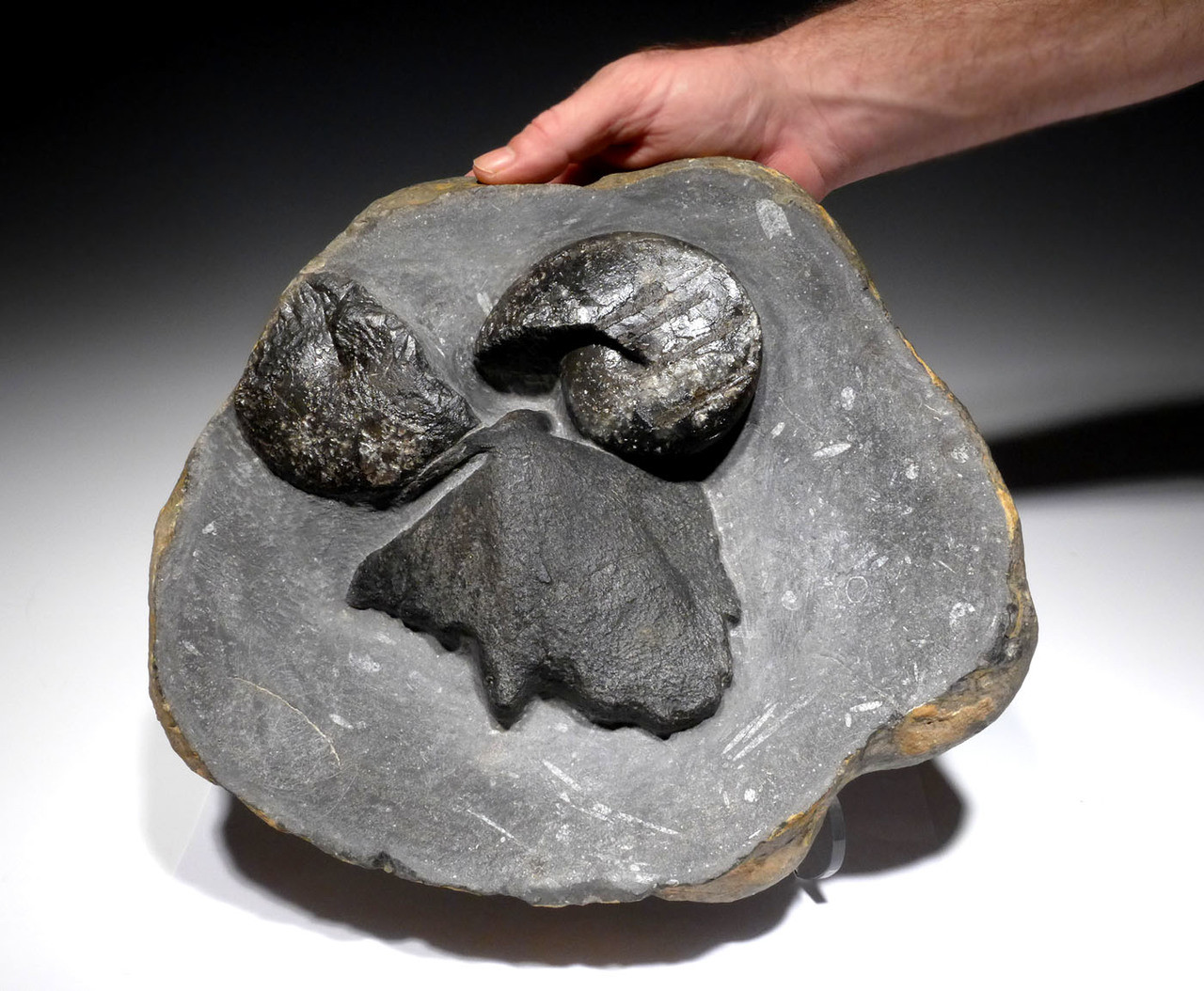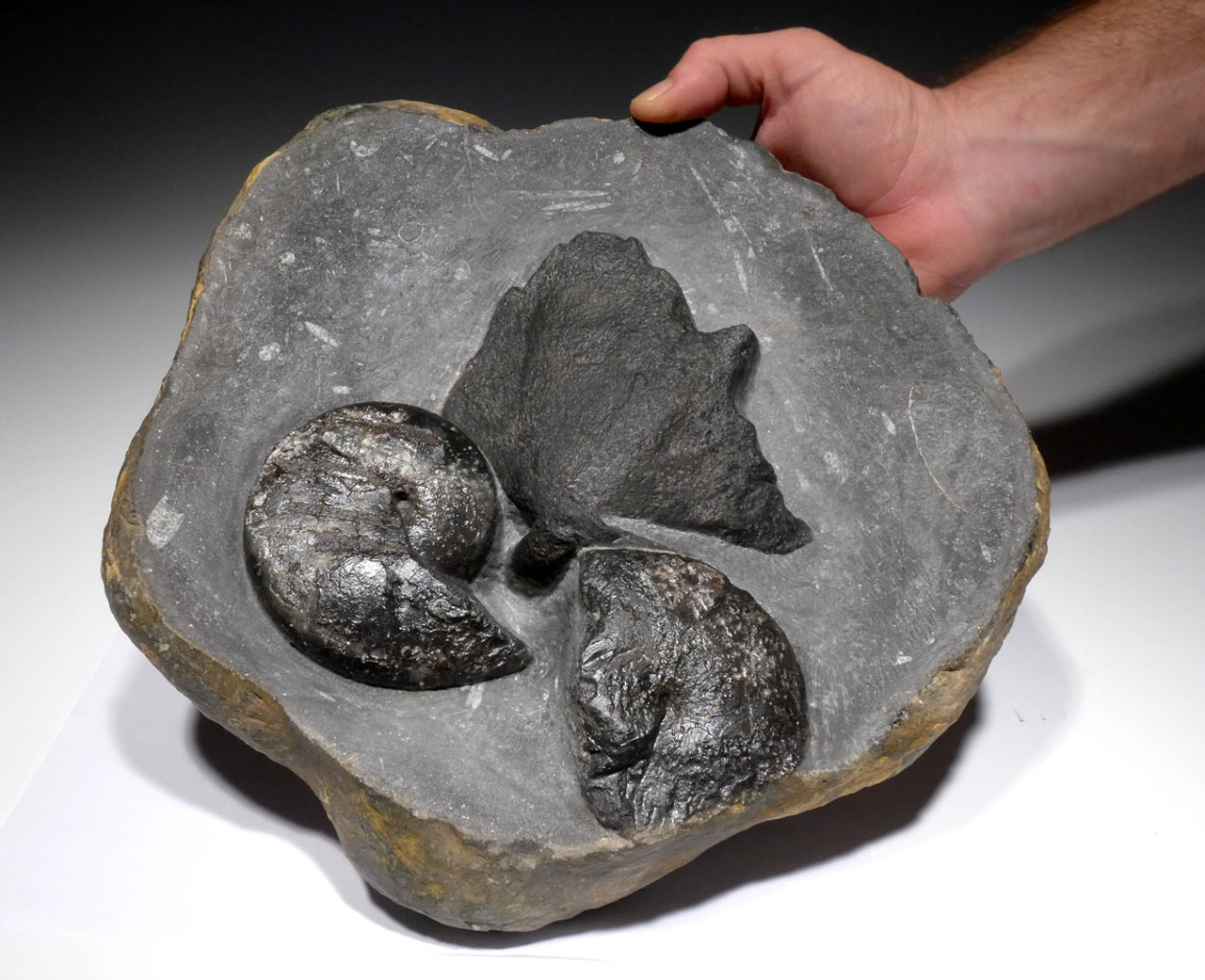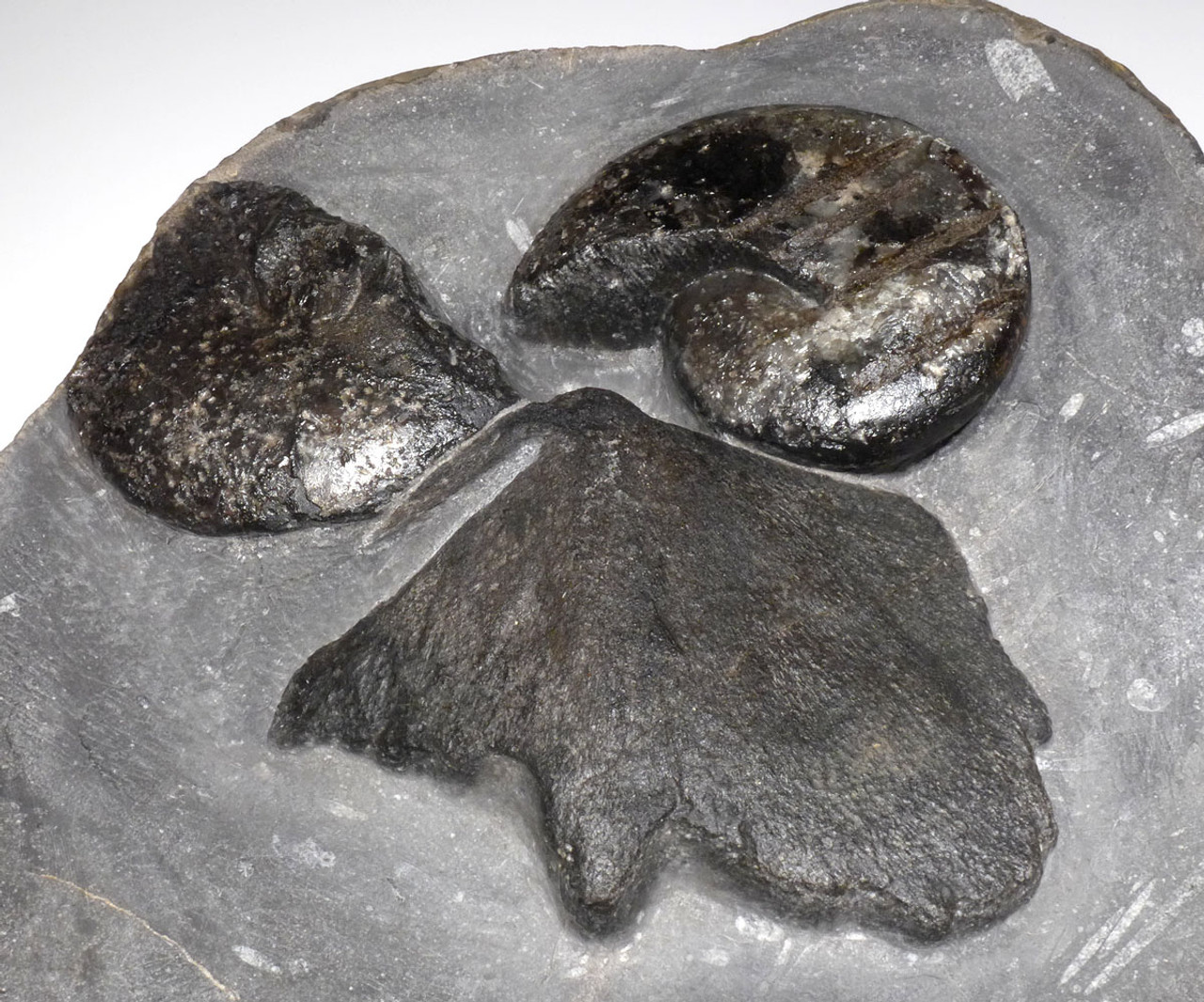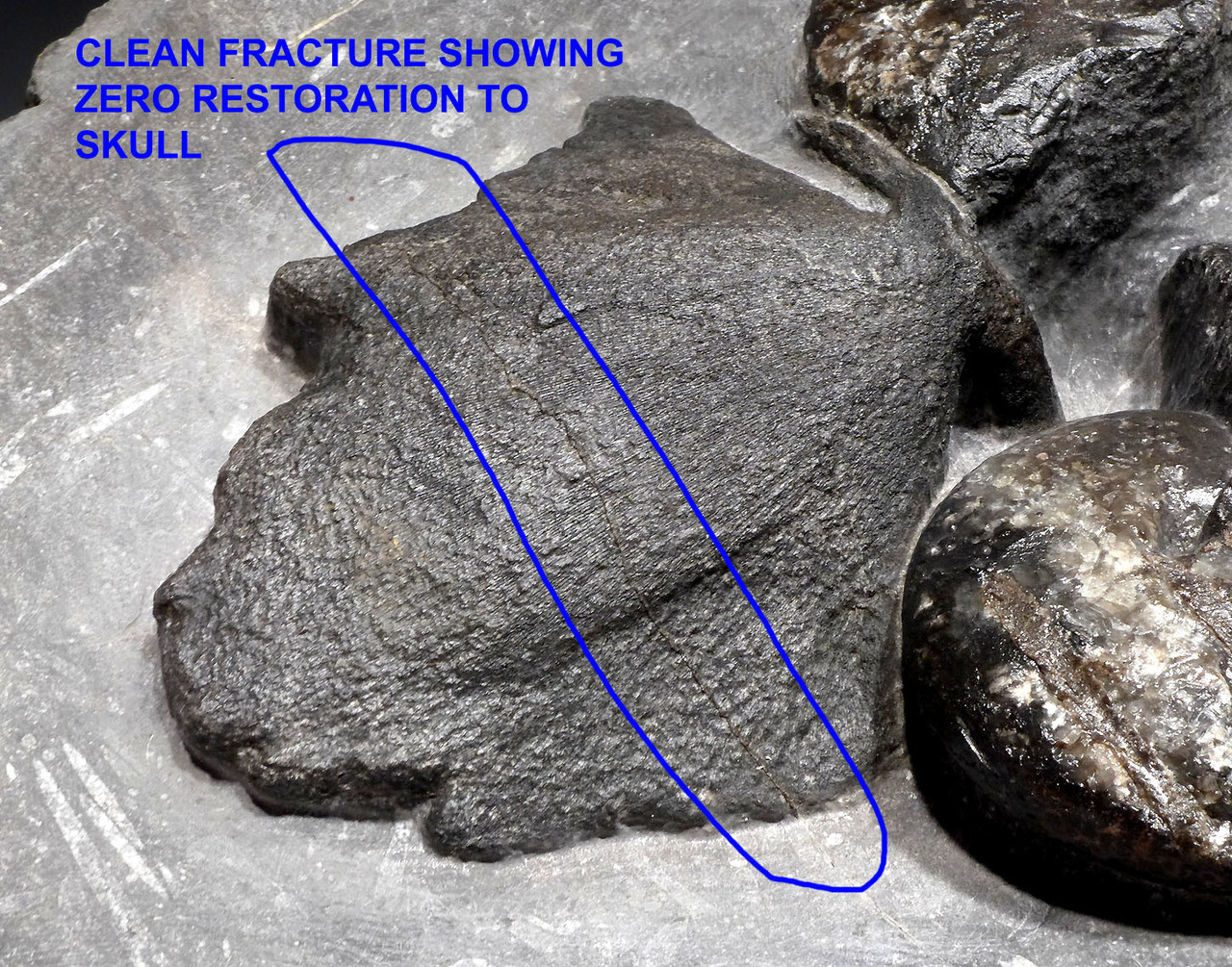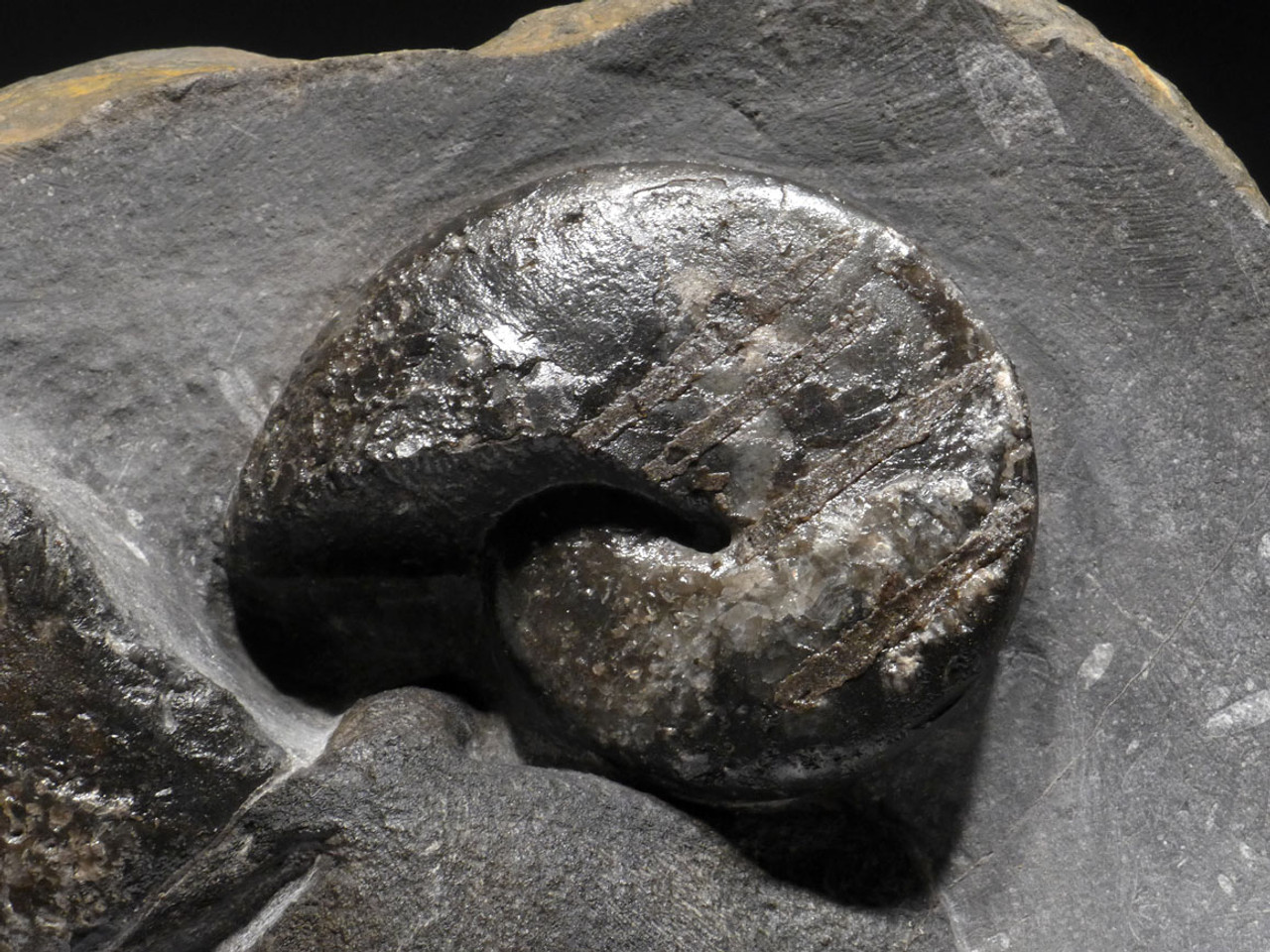Product Description
A major "first" and a "once-in-a-lifetime" fossil! This is a substantial natural concretion fossil, containing a large Placoderm armored fish skull with two associated Goniatite cephalopods. Over the last TWO DECADES of extensive work and travel with Morocco fossil deposits, this is the ONE AND ONLY time we have ever seen such an amazing fossil of this kind and it is the only one we have to offer. It is truly a RARE opportunity to acquire a substantial fossil specimen of a Devonian Placoderm from North Africa, not to mention the nature of this specimen being preserved in a large geode with two related cephalopod fossils in which it was entombed with. It was found in the Devonian deposits of the Anti-Atlas Mountains in Morocco and displays the main dorsal portion of a large armored fish skull. In the stone surrounding the three fossils, you can see the typical black limestone fossil-bearing rock showing Orthoceras fossils scattered throughout the host rock. It is hard to determine what species this is but there are several scientific papers published on the region and its fossil finds like this.
We can attest to the fact this specimen is 100% NATURAL AND AUTHENTIC AS WE FINISHED THE PREPARATION OF THIS SPECIMEN IN OUR ON-PREMISES LAB. Pneumatic tools and acid baths yielded the amazing detail on the Placoderm skull. Like all concretion fossils, they must be broken to see if there are any fossils inside and this specimen is no different. Fortunately, it has only a single fracture running through the skull that required no restoration or crack filling, further offering visual proof of the 100% natural and genuine condition of the skull.
For the ultimate, advanced paleontological collections, this is a MUST HAVE specimen and will be impossible to ever secure another like it.
Placoderm is a class of armored prehistoric fish, known from fossils, which lived from the Silurian to the end of the Devonian period. Their head and thorax were covered by articulated armored plates and the rest of the body was scaled or naked, depending on the species. Placoderms were among the first jawed fish. The first identifiable placoderms appear in the fossil record during the late Llandovery epoch of the early Silurian. The various groups of placoderms were diverse and abundant during the Devonian, but became extinct at the end-Devonian Hangenberg event 358.9 million years ago.
During the Devonian, placoderms went on to inhabit and dominate almost all known aquatic ecosystems, both freshwater and saltwater, but this diversity ultimately suffered many casualties during the extinction event at the Frasnian–Famennian boundary, the Late Devonian extinctions. The remaining species then died out during the Devonian/Carboniferous extinction event. Not a single placoderm species has been confirmed to have survived into the Carboniferous.

- ARTWORK COPYRIGHT BY N. TAMURA
 US DOLLAR
US DOLLAR
 EURO
EURO
 AUSTRALIAN DOLLAR
AUSTRALIAN DOLLAR
 CANADIAN DOLLAR
CANADIAN DOLLAR
 POUND STERLING
POUND STERLING

